Drafts are always unpredictable for a multitude of reasons. The truth is that all players available in the pool have an immense amount of talent, and their talent levels are so close that even the most seasoned professionals frequently struggle to rank them.
Also, a prospect’s level of success in the National Hockey League is not directly contingent on just how talented or flashy he is before getting drafted. Sometimes it’s about finding the right fit, sometimes it’s the development scheme, and sometimes it’s just luck.
This year’s draft class, like the past two, is setting up to be one of the toughest in history to evaluate. Not only has the COVID-19 pandemic impacted the past three amateur seasons for our prospects, the conflict between Ukraine and Russia has made it even more difficult to scout and evaluate Eastern European players.
Still, let’s give this a shot.

- Juraj Slafkovsky, LW, TPS (Finland)
In a historically great year for hockey in Slovakia, Juraj Slafkovsky has rocketed up draft boards and is not considered by some to be the best prospect in this draft. Shane Wright is still projected to go first to the Montreal Canadiens, but Slafkovsky appears to have more upside. Helping the Slovaks to a bronze medal in the Olympics, Slafkovsky was named MVP of the tournament as a teenager.
He’s big and strong, skates well for his size, and is ridiculously creative with the puck. A quick thinker, Slafkovsky can score and create goals in a substantial amount of ways.

2. Logan Cooley, C, USA NTDP
The gap between Cooley and Slafkovsky is narrow, as both have high ceilings but completely different games. Where Slafkovsky is more physical, Cooley is quite a bit smaller and relies more on his speed. He also has tremendous hands and hockey sense, being able to accurately sauce passes to his teammates while moving at full speed.

3. Shane Wright, C, Kingston Frontenacs (OHL)
Wright will likely be the first pick in the draft as he has been projected to be for years, but he certainly did not run away with unanimous top prospect honors like he was expected to.
The most important aspect of Wright’s game is that he is well-rounded and can be depended on in many situations. His game will translate well to the NHL, as he has the highest floor in the draft due to his versatility. Wright may also be an impactful goal-scorer thanks to his quick release and dart-like shot.

4. Cutter Gauthier, LW, USA NTDP
He may lack some of the explosive acceleration possessed by those ranked higher than him, but Gauthier is a dark horse and could very well be the best player from this draft class when all is said and done.
A power forward who stands just over 6’2, Gauthier throws punishing body checks and also laces wrist shots past goaltenders. The Boston College commit plays a composed game and has both leadership abilities and confidence in himself.

5. Joakim Kemell, RW, JYP (Finland)
A lethal weapon from the left slot on the power play, Kemell boasts a wicked and accurate right-handed shot. Kemell also has decent playmaking skills and is not afraid to go into muddy waters after a puck.
Kemell’s effort and intensity along with his composure make him a quality candidate to have quite a successful NHL career.

6. Danila Yurov, RW, Metallurg Magnitogorsk (KHL)
It’s probably a safe bet to expect Russian players to fall in this year’s draft because of all of the uncertainty surrounding worldwide diplomacy. Yurov likely won’t be picked nearly this high, but it’s not because of his ability.
If we put away any justified anxieties about Russian players and take away the risk of potentially drafting someone and never having them come overseas to play, Yurov could arguably be a top five pick. He put up better draft-year numbers than players like Artemi Panarin and Nikita Kucherov, and has experience playing in the KHL.
Since his Magnitogorsk team is one of the best in the league, Yurov hasn’t gotten much ice time; however, he has made the most of the ice time he has gotten.
Yurov is an exceptional 200-foot player who uses his stick intelligently to force turnovers and kill penalties. He is also a strong skater and can stickhandle well in the offensive zone. The unfortunate truth, though, is that a KHL contract is quite a red flag these days.

7. Denton Mateychuk, D, Moose Jaw Warriors (WHL)
Simon Nemec and David Jiricek are the ones getting the press in a weak draft for defensemen, but Mateychuk is the best rearguard on the board.
He’s a bit small for a defenseman standing just over 5’10, but he still plays aggressively in his own zone and anticipates plays well.
Mateychuk is a threat on offense as he can start a rush with his terrific skating ability. He has great instincts and makes tough passes look easy.

8. Simon Nemec, D, Nitra (Slovakia)
Another Slovak, Nemec could very well be the first defenseman taken in the draft. A bit undersized for a blueliner at 5’10, Nemec uses his agility and playmaking ability to make up for his lack of physicality.
Nemec plays a very composed game and has matched up well against professionals years older than he is. He can jump into an offensive play to set up scoring chances and use his speed to get back if he needs to.

9. Matt Savoie, C/W, Winnipeg Ice (WHL)
Standing at 5’9, Savoie has drawn comparisons to Johnny Gaudreau. That’s setting the bar pretty high, but the comparisons aren’t completely unwarranted.
Savoie is an offensive dynamo with terrific hockey sense. He possesses characteristics of a playmaker, dangler and sniper all in one, and even likes to throw the body around despite his size.
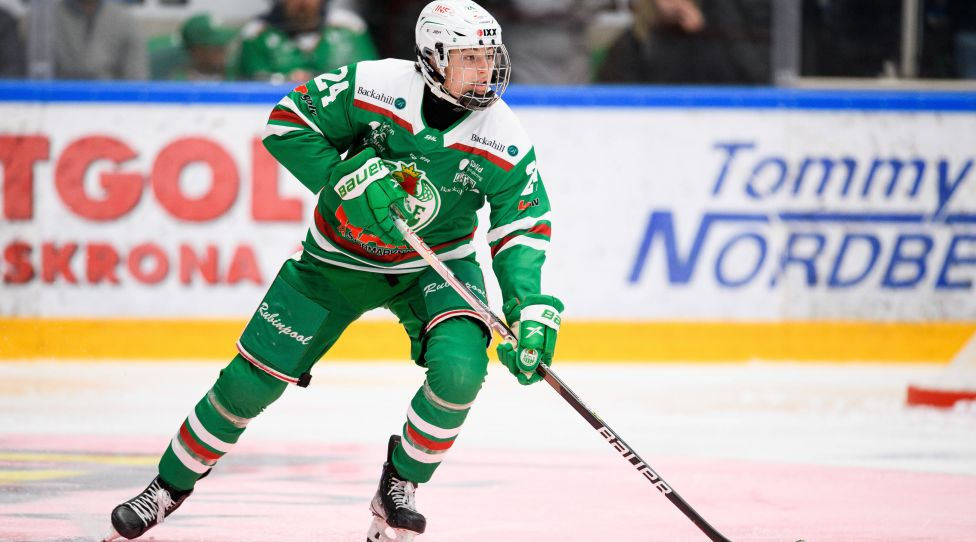
10. Marco Kasper, C, Rogle BK (Sweden)
An Austrian playing in Sweden’s top leagues, Kasper has done well competing against adults as a teenager. He excels in stickhandling around the net, but also gets goals by winding up an ripping clappers past keepers.
Kasper does not hesitate to carry the puck or go into rough areas, no matter who he is playing against. Whichever team takes him will be one that admires his work ethic and compete level.

11. David Jiricek, D, HC Plzen (Czechia)
A knee injury kept Jiricek out for about half of the season, but he still played enough to get a good read.
Jiricek is lauded as an offensive defenseman who can run a power play well. He has a decent frame and uses his body to be physical.
The knock on Jiricek, however, is his skating ability. He lacked some of the top-end skating skills that are needed more and more every day in today’s NHL, and that was before he had knee surgery. Can he keep up with NHL forwards?

12. Frank Nazar III, C, USA NTDP
University of Michigan players and commits got lots of attention in last year’s draft. There aren’t as many notable Wolverines or future Wolverines selected early this year, but Nazar will certainly be the first.
Frank Nazar is a speedy center who can accelerate quickly in the offensive zone to blow by defenders. He plays at a competitive level and mixes wrist shots and dekes to score goals.

13. Ivan Miroshnichenko, LW, Omsk Krylia (Russia)
Miroshnichenko could become a steal in this draft if he reaches his full potential. Unfortunately, the prototypical power forward was diagnosed with Hodgkin’s lymphoma in January and is a bit volatile of a prospect despite positive news of late.
When healthy, Miroshnichenko can play a strong 200-foot game. He forechecks and backchecks with considerable effort, controls the puck exceptionally well, and has an above-average shot.

14. Jonathan Lekkerimaki, RW, Djurgarden (Sweden)
The right-handed Lekkerimaki boasts a blistering shot, especially on one-timers. He has the ability to become a 20 or even 30 goal scorer in the NHL solely because of his shot, and he also shows bursts of above-average speed at times.
Other than his shot, however, it is not overly clear how well the rest of Lekkerimaki’s game will translate to the NHL. He’s more of a floater who waits for the puck to get to him, and even though his positioning is good, he shows reluctance heading into corners or playing along the boards.

15. Noah Ostlund, C, Djurgarden (Sweden)
Scouts are ranking Ostlund much lower than they should. Sure, he doesn’t score tons of goals, but he does everything else. His skating, particularly his edge work, is terrific. He handles the puck well at all speeds, competes hard, and makes smart passes. Ostlund’s floor is a center on the third or fourth wing – his ceiling could be a top-six playmaker.

16. Brad Lambert, C, Pelicans (Finland)
There’s a legitimate chance that Lambert is a top-five talent in this draft, but his streakiness is a red flag to many teams. He has tons of high-end skill when it comes to skating, and the right organization could be able to milk some more consistent effort out of him.

17. Kevin Korchinski, D, Seattle Thunderbirds (WHL)
Electricity is what Kevin Korchinski’s game is all about. He has good size for a defenseman, but is gifted at carrying the puck up the ice or moving it to create chances.
Korchinski is an asset offensively, but his effort in the defensive zone may cause some teams to look elsewhere.

18. Isaac Howard, LW, USA NTDP
On a team full of first-round talent (as Team USA always seems to be), Howard has been a bit overshadowed. He isn’t large for a winger by any means, but he can still generate lots of offense through his skating ability and his instincts in the offensive zone.

19. Jiri Kulich, C, Karlovy Vary (Czechia)
Kulich plays a strong 200-foot game highlighted by his forechecking and backchecking ability. He is a pest to opposing offenses when his team does not have the puck, and a threat in the offensive zone because of his quick, accurate wrister.

20. Pavel Mintyukov, D, Saginaw Spirit (OHL)
Mintyukov’s hockey IQ in the offensive zone makes him an appealing defense prospect. He can run a power play by making smart passes, and also creeps in and takes hard, accurate wrist shots.
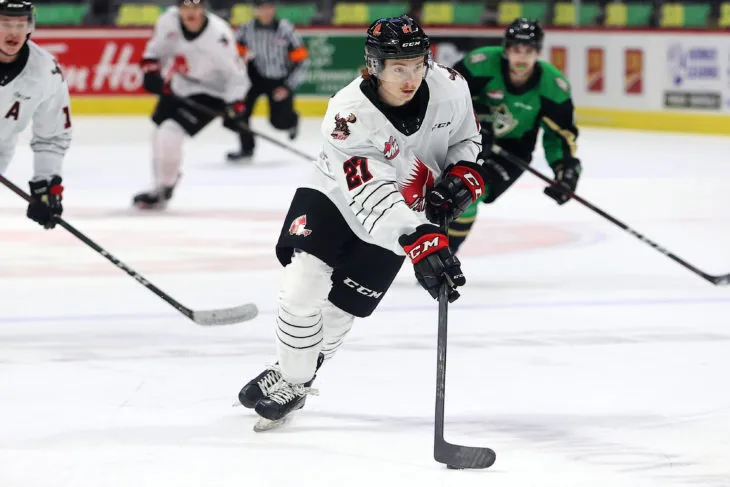
21. Jagger Firkus, RW, Moose Jaw Warriors (WHL)
Firkus is an offensive dynamo. He gets flashy and even scored a lacrosse goal this season, but his hands are magical and his sizzling shot might be even better.

22. Luca Del Bel Belluz, C, Mississauga Steelheads (OHL)
Advanced puck skills helped Del Bel Belluz have one of the best first halves in the OHL this year. Even if he tailed off a bit before season’s end, he showed lots of promise dangling around defenders and creating goals by shooting and passing.
He could bump over to play wing at the NHL level, but his sound defensive game gives him value as a center as well.

23. Lian Bichsel, D, Leksands (Sweden)
The term “traffic cone” is used to negatively describe a defenseman who doesn’t move his feet and is easy to skate past. Lian Bichsel is the exact opposite.
While he won’t light up any scoresheets and doesn’t always make great decisions in the offensive zone, the 6’5 Bichsel uses his hustle and long reach to shut down opposing offenses.

24. Lane Hutson, D, USA NTDP
Picking a defenseman under 5-foot-9 is a tough ask, but Lane Hutson’s hockey IQ might cause him to hear his name called in the first round. He’s a good skater with terrific offensive instincts and is at his best when trying to move the puck. The question will always be whether his size will allow him to defend effectively at the NHL level.

25. Reid Schaefer, LW, Seattle Thunderbirds (WHL)
One of the most important attributes when it comes to evaluating prospects is skating ability. Even though Schaefer’s is not quite up to par at times, he may not need to be a burner if used in the correct role. He’s a 6-foot-3 power forward who is great with the puck down low and also has a wicked wrist shot.

26. Liam Ohgren, LW, Djurgarden (Sweden)
The third part of Djurgarden’s three-headed monster along with the aforementioned Lekkerimaki and Ostlund is Liam Ohgren, a winger who has a knack for scoring goals by getting himself in good position.

27. Owen Pickering, D, Swift Current Broncos (WHL)
Pickering is a big 6-foot-4 defenseman who skates well for his size and always positions himself well in the offensive zone. He’s going to be a bit of a project as he’s adjusting his game after a recent growth spurt, but a team who is willing to be patient and develop him could end up with a solid asset on the blue line.

28. Filip Mešar, RW, Poprad (Slovakia)
Yet another Slovak prospect, Mešar is a nifty skater who carries the puck with confidence and makes advanced moves to deceive enemy defensemen.

29. Seamus Casey, D, USA NTDP
Casey only stands at 5-foot-10, but plays much bigger than that. He is not afraid to throw the body and make aggressive plays in the defensive zone, and can create tons of offensive with his shot as well.

30. Ryan Chesley, D, USA NTDP
There’s a defenseman in every draft, it seems, that is known for his booming shot. This year’s edition is Chesley – an average-sized defender whose physicality helps him play well in his own zone. Chesley’s knock is that he does not profile as an option to quarterback a power play, as his puck-moving ability is the weakest part of his game.

31. Conor Geekie, C, Winnipeg Ice (WHL)
Geekie is a large center who stands at 6’3 and has a nice set of hands. He seems like a Michael Rasmussen-type when watching his juniors tape, but has been inconsistent this season and isn’t the most gifted skater.

32. Mattias Havelid, D, Linkoping (Sweden)
Undersized defensemen are plentiful in this year’s draft crop, if you haven’t noticed. The 5-foot-9 Havelid led all defensemen in points during this year’s IIHF World Junior Championships, is a gifted shooter and a strong skater.

33. Owen Beck, C, Mississauga Steelheads (OHL)
Beck does lots of things well. Just under six feet tall, he is a strong skater and isn’t afraid to get physical. He makes smart, accurate passes and can also hit targets with an accurate wrist shot. He may move to the wing at a higher level, but profiles as a 200-foot third-liner.

34. Nathan Gaucher, C, Quebec Remparts (QMJHL)
Gaucher is a prototypical two-way center who excels at obtaining the puck for his team in all three zones. His ceiling may not be sky-high, but he is a safe bet that should slot in nicely on a third line in the NHL one day.
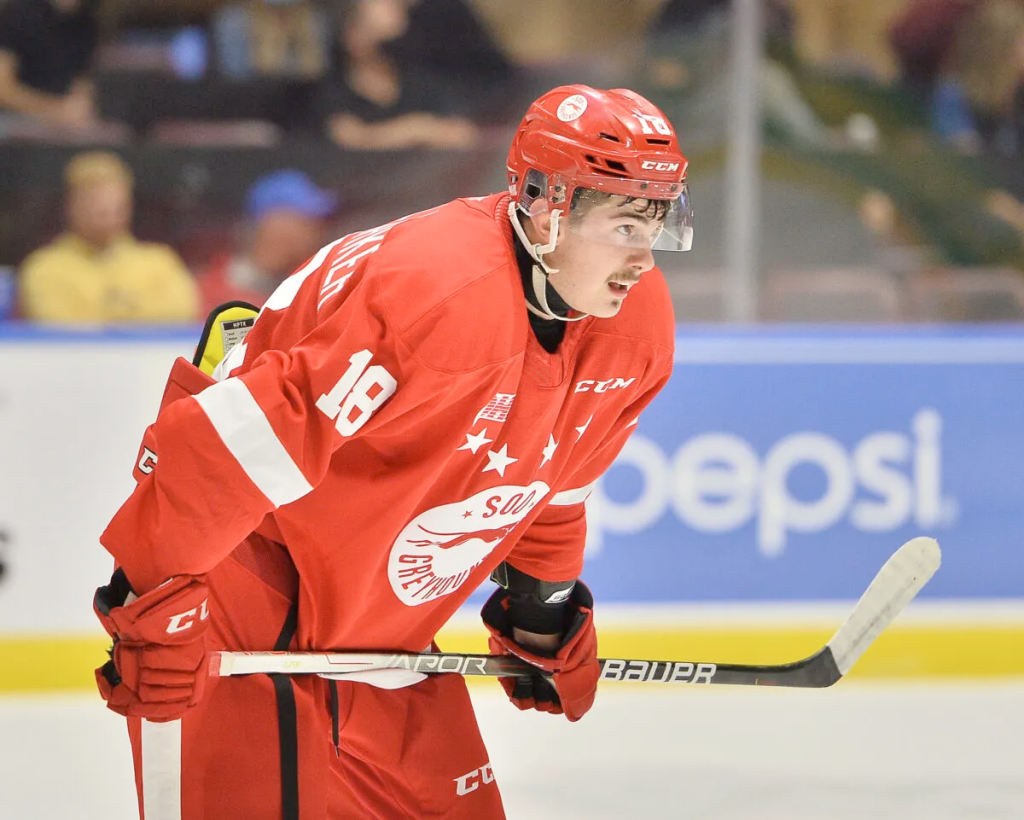
35. Bryce McConnell-Barker, C, Sault Ste. Marie Greyhounds (OHL)
McConnell-Barker may slide over to wing due to his skating ability, and he has the size to play on the wing, but he is an impact player in the offensive zone. He consistently goes into tough areas and thrives there, also scoring plenty of goals with his quick release and accurate shot.

36. Noah Warren, D, Gatineau Olympique (QMJHL)
He’s been ranked lower than this by nearly every prognosticator, but Warren is a stud. A 6-foot-5 defenseman who skates well for his size, has a record of racking up points, and plays physically will always catch the eye of someone.
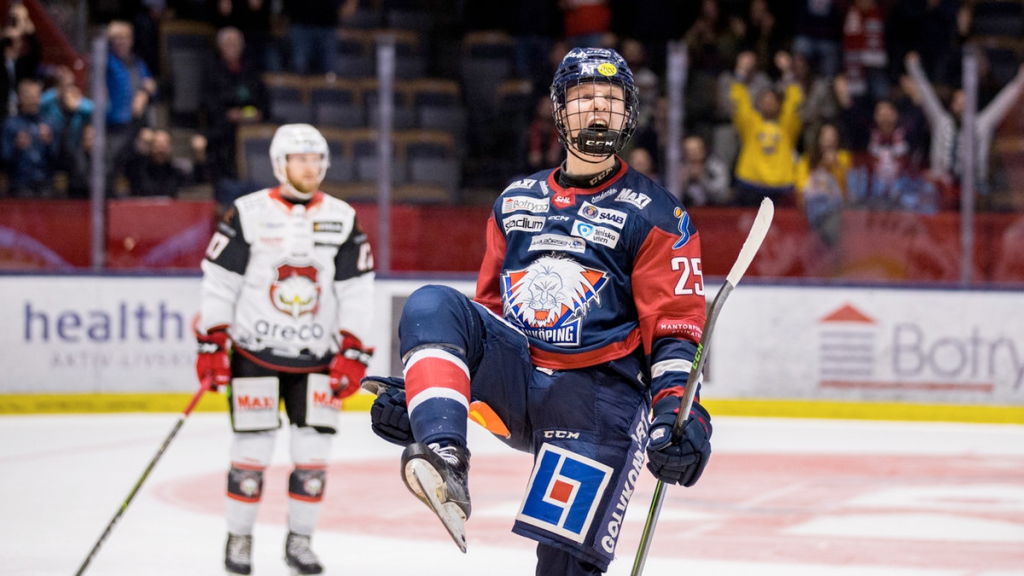
37. Filip Bystedt, C, Linkoping (Sweden)
He’s a 6-foot-3 center with a nose for the net and a lightning-quick release. Bystedt has the tools needed to succeed in the NHL and also does well skating up the ice with the puck.

38. Julian Lutz, LW, Munchen (Germany)
Moritz Seider, a German, just won Calder Trophy for Rookie of the Year. Lutz is also German, but trying to compare him with Seider, a defenseman, doesn’t make much sense.
Lutz is a power winger who could go higher in the draft if a team likes his raw talent. He is good with the puck and is an aggressive forechecker, but fails to make much of an impact in quite a few of his shifts. If a team can fin the right role and development program for him, he could be a diamond in the rough.

39. Jack D. Hughes, C, Northeastern (NCAA)
One of the youngest players in college hockey, Hughes won’t go quite as high as the other Jack Hughes did in 2019. He still should be a productive NHL player because of his puck skills. Having a year of experience against college players under his belt may also appeal to scouts.

40. Maveric Lamoreaux, D, Drummondville Voltigeurs
He’s going to be a project and is a bit clumsy, but it’s always tantalizing to go after a 6-foot-7, right-shot defenseman with his physicality. The other tools are there, they just need some more refining.
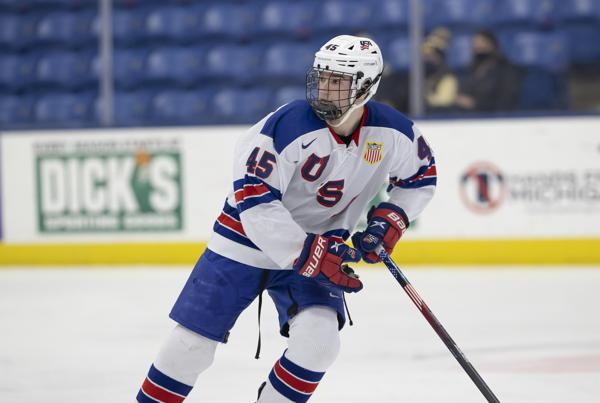
41. Jimmy Snuggerud, RW, USA NTDP
Snuggerud didn’t make as many highlight reels as some of his Team USA counterparts, but he has a solid shot and good instincts in the offensive zone. He may be a bit impeded by his skating ability at the NHL level.

42. Rutger McGroarty, RW, USA NTDP
Another Michigan commit, McGroarty is a good leader who competes hard and handles the puck well in the offensive zone. The problem, however, is that his skating ability may not be up to par in order to be an effective NHLer.

43. Nicholas Moldenhauer, C, Chicago Steel (USHL)
One of the more polarizing prospects in the draft, Moldenhauer is a strong skater with good hands that he uses to score highlight-reel goals. He’s almost like a Jagger Firkus-lite. Some scouts, however, doubt his ability to be a playmaker and anticipate plays at the NHL level.

44. Mats Lindgren, D, Kamloops Blazers (WHL)
Lindgren is a purely offensive defenseman who forechecks well and has quick-twitch reactions to score and create goals. His defensive game isn’t strong, but it doesn’t need to be a liability with a bit of development.
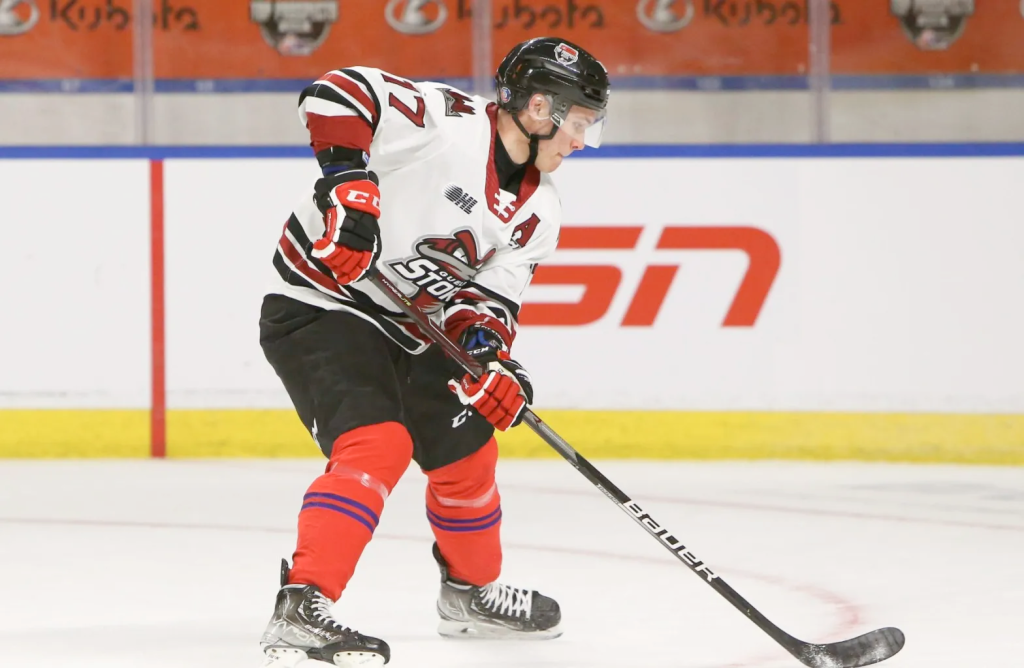
45. Danny Zhilkin, C, Guelph Storm (OHL)
Zhilkin was born in Russia, but has played on Team Canada in international play, putting up intriguing numbers in the process. He has also done well in Guelph this year, playing like a small, handsy dangler rather than a 6-foot-1 center.

46. Gleb Trikozov, LW, Omsk 2 (Russia)
Wingers are generally the weakest skaters on a team, and while it is one of Trikozov’s weaker traits as well, his skating isn’t awful. He’s good at winning puck battles and moving the puck up the ice to create offense.
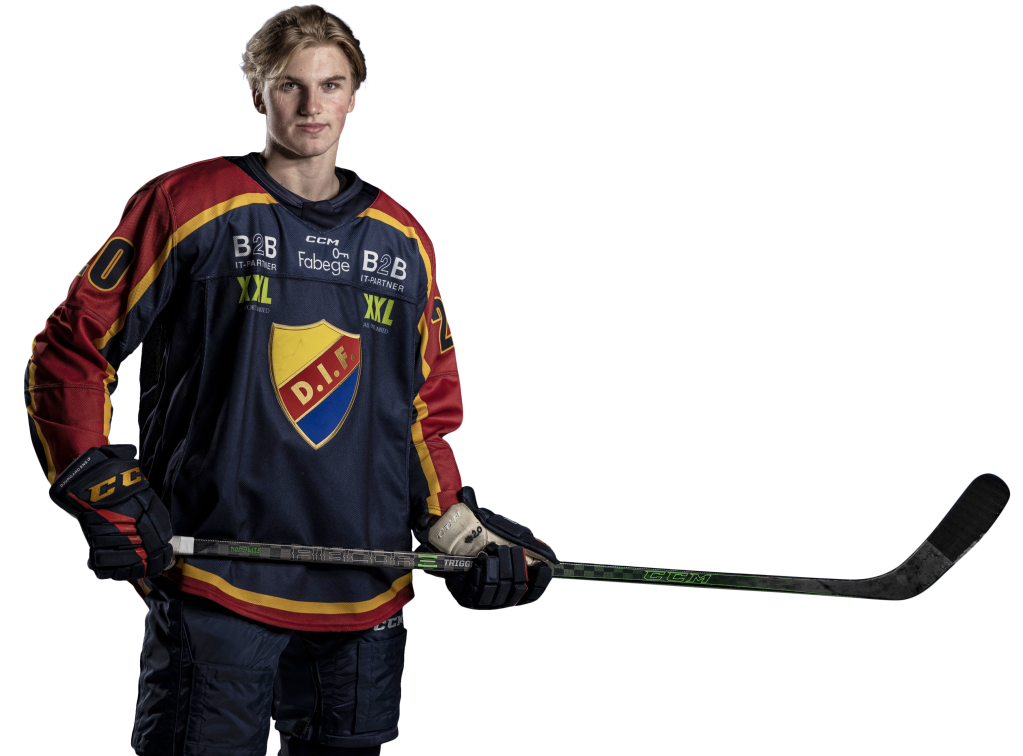
47. Calle Odelius, D, Djurgarden (Sweden)
He’s not a dynamic defender or a superb offensive catalyst, dropping his value a bit, but Odelius is a fantastic skater. If a player can skate, some of the other traits may come along with hard work and patience.

48. Ty Nelson, D, North Bay Battalion (OHL)
Another undersized defenseman! The North Bay Battalion have not been a historically great franchise in the Ontario Hockey League, but they had a solid 2022 season thanks in large part to their star defenseman, Nelson.
Just under 5-foot-10, Nelson is knocked for his size and lack of physicality. He gets beat occasionally in his own zone as well. However, Nelson is a great skater and creates lots of offense with his passing and shooting ability.

49. Tristan Luneau, D, Gatineau Olympiques (QMJHL)
One of the younger players in the draft at only 17, Luneau is a defenseman who moves the puck well but also is strong in his own zone. He has solid puck skills that will continue to improve, but his skating ability needs to improve quite a bit in order to be an impact player in the NHL.

50. Sam Rinzel, D, Chaska HS (Minnesota)
Projecting high school players is difficult because the competition level is so much lower than in juniors, but Rinzel has lots of tools that will appeal to NHL clubs. He stands above 6-foot-4, skates well for his size and has shown advanced puck skills.
We will find out more about how much he will need to develop when he plays at the University of Minnesota next year.